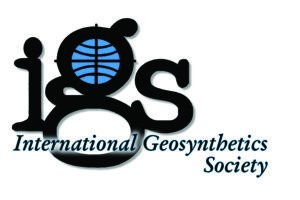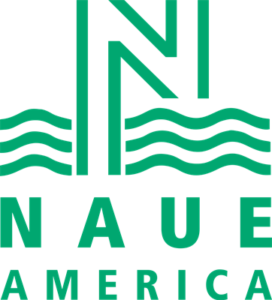Panel discussions recordings are available below. They are in archived in Vimeo or GoTo Webinar depending on the session.
At What Frequency Should We Take Seam Destructive Samples?
(Sponsored by Titan Environmental)
Moderator: Joanna Toepfer, CQA Solutions, LTD
Installer: Todd Harman, Hallaton
Welding equipment manufacturer: Eddie Weiser, Leister Technologies
Engineering and academia: J.P. Giroud ECP, Ph.D.
Construction quality assurance: Glen W. Toepfer, CQA Solutions
Geosynthetic testing laboratories: Gary Torosian, Geocomp
Over the past decade, the debate about destructive testing frequencies has heated up as the standard frequency of 1 sample per 500 lineal feet of welding has been criticized and challenged. There have been numerous alternatives suggested, yet the most common specification found on containment projects remains the 1/500.
What factors should be considered in determining the appropriate sampling frequency? Materials? Weld type? Experience? Use of smart technology welding equipment? Non-destructive seam testing failures? Is peel and peel and shear testing enough? Should the frequency be changed? Should the change be universal for the industry or determined on a project-by-project basis?
A panel composed of key members representing a cross-section of the containment system industry will try to answer these questions and more in what is sure to be a lively discussion!
Filtration and Drainage Performance of Geosynthetics in Changing Climate Conditions
Moderators: Eric Blond, Eric Blond Consultant and Pietro Rimoldi, Consultant, on behalf of the Technical Committee on Hydraulics of the IGS

Panel Members:
- Eric Blond, Consultant, Canada (Moderator)
- Pietro Rimoldi, Consultant, Italy (Moderator)
- Michael Heibaum, retired, formerly Federal Waterways Engineering and Research Institute (BAW), Germany
- Kelvin Legge (assisted by Karl Bester), Department of Water and Sanitation, South-Africa
- Sam Allen, TRI Environmental, USA
- Markus Wilke, Huesker, Germany
The world seems to experience more extreme weather events than what used to be considered in the past. Conditions of rainfall and drought, higher and lower temperatures, rainfall intensities are affecting the quantity of water that must be managed on any project. How will this affect the required performance of geosynthetics for filtration, drainage and erosion control?
On the other hand, the properties of geosynthetics may be subject to important variations with temperature. Should material requirements be the same in cold and hot climates? How can this be addressed at the design stage?
The panel will discuss how the design of geosynthetics may be influenced by changing weather conditions, as well as how filtration and drainage properties can change in extreme cold and hot climates.
Geosynthetic Specifications: The Pros and Cons of Existing Geosynthetic Specifications
Panel Members and roles:
Landfill Systems: Robert Mackey, S2Li
Erosion Control Systems: Joel Sprague, TRI Environmental
Pavement Systems: David Suits, LDS Geosynthetics Consulting Services
Earth Structure Systems: George Koerner, GSI
Drainage Systems: John Lostumbo, TenCate
Panel members will review critical geosynthetics specifications in the areas of landfill systems, erosion control systems, pavement systems, earth structure systems, and drainage systems, focusing on the current pros and cons of each as well as potential future developments. Audience participation is strongly encouraged as potential improvements to the specifications are explored.
Measuring the Performance of Geosynthetic Roads – Bench Top to Full-Scale Testing and Monitoring Method
Panel Members:
Eli Cuelho, TRI Environmental
Jeb Tingle, USACE
Jay Kwon – Kennesaw State University
Amir Shahkolahi – Global Synthetics
There are several test methods and equipment styles currently used to measure the large-scale or full-scale performance of roadways that utilize geosynthetics as reinforcement and/or stabilization. Designers ultimately desire to have performance data that are accurate and reflect the true benefit of using geosynthetics in roads so they can confidently use this information in design; however, many research projects often present confounding results or are inconclusive due to the lack of standardization. Test methods are currently being developed that would benefit from the input of a broader audience to improve the likelihood of successful adoption and implementation.
Sponsored by: 
The Permanent Road Foundation Experience
Moderator: Mark Marienfeld, TreadMark
Panel Members and roles:
DOT user of separation/stabilization geotextiles: Amanda Warren PE, Oklahoma DOT
FHWA with a National perspective: Mike Adams PE, Turner Fairbanks
Aggregate Industry: Kevin Vaughan PE, Vulcan Materials
Academia and Research: Erol Tutumluer PE, Illinois Center for Transportation Research and TRB Chair
Geosynthetics Industry: Drew Loizeaux, Propex Geosynthetics
Arguably the largest asset of most transportation agencies is the unbound aggregate used as road support. This huge asset does not receive the attention it deserves and is largely placed and forgotten. Inadequate forensic research is conducted to prove to agencies that the degradation of aggregate layers is the root cause for most premature road failures, and unnecessary maintenance and repair. Members of this panel will; explain the problem of base aggregate contamination, propose a simple geosynthetic solution, explain a Permanent Road Foundation, discuss stone requirements, verify DOT successes, explain FHWA oversight responsibility, explain the lack of transportation asset management attention, and identify research needs. Interaction with the audience will be encouraged. Goal is to bring more attention to the unnecessary loss of aggregate while verifying that a Permanent Road Foundation; reduces construction and maintenance cost, reduces road downtime and traffic congestion with the associated poor traffic safety statistics, and conserves resources and lowers our carbon footprint.
 TEXTILES.ORG
TEXTILES.ORG


